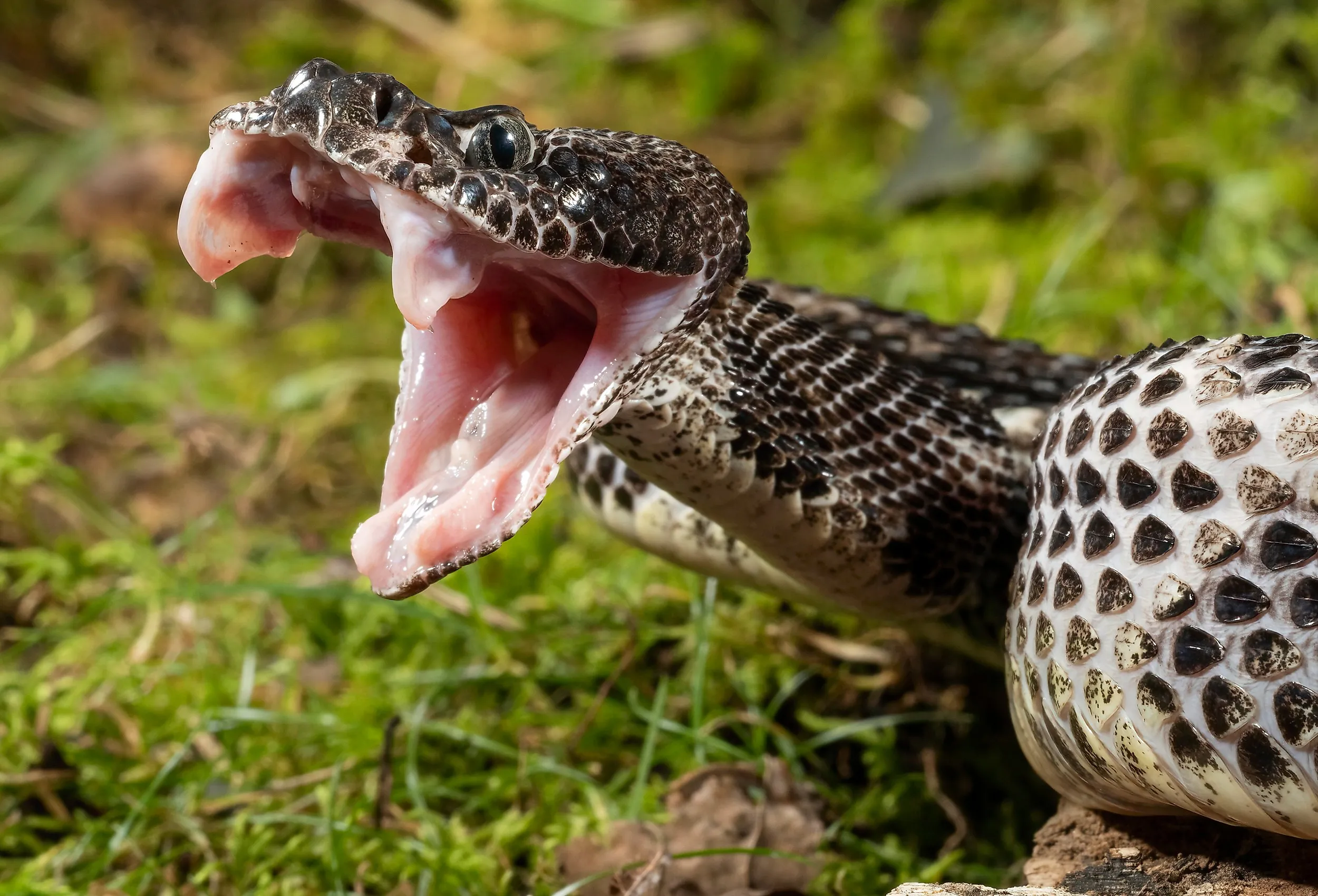
The 13 Deadliest Animals in New York
The state of New York harbors a vast wilderness area with over 60% of its land mass covered in forests, providing habitat for all manner of critters, crawlers, and creatures, both small and sizable. From the far northern reaches of the Adirondack Mountains down through the Catskill region lies a diversity of terrain, from dense forests and wetlands to grasslands and marshes.
Within this untamed domain live many animal species that call the Empire State home. While most coexist peacefully with humans, a small number are potentially deadly if encountered. Learn more about the most dangerous animals in New York's countryside and backwoods.
Copperhead Snake
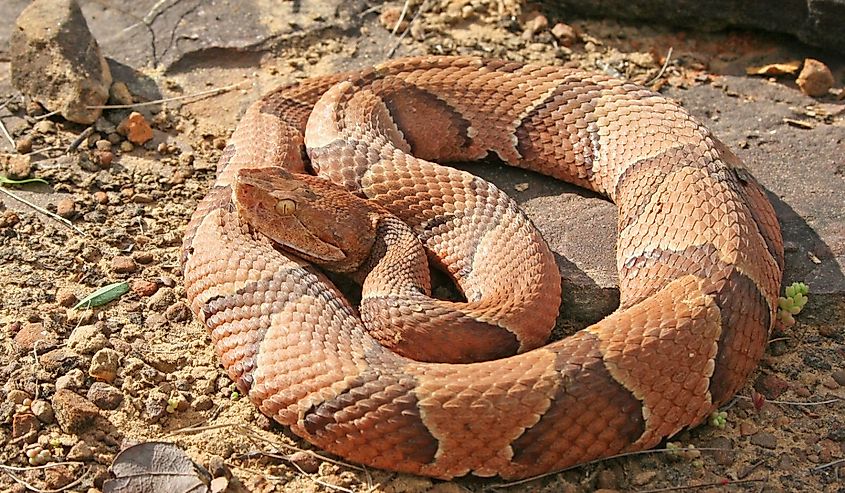
The copperhead is one of the three venomous snake species in New York State, occurring along the Hudson Valley and stretching down to the Catskill Mountains. They have broad heads and stout bodies, with adults growing up to 3 feet. Their coloration ranges from a pale to a pink-like tan. Copperheads are in the "pit viper" family; they possess a heat-sensing organ that enables them to track and ambush prey by sensing the infrared heat they produce. These snakes have a relatively low potency venom, and when threatened, they strike and deliver a warning bite.
A severe bite contains a hemotoxin that attacks and destroys the blood cells, resulting in swelling and severe pain. In case of a bite, seek immediate medical attention.
Massasauga Rattlesnake
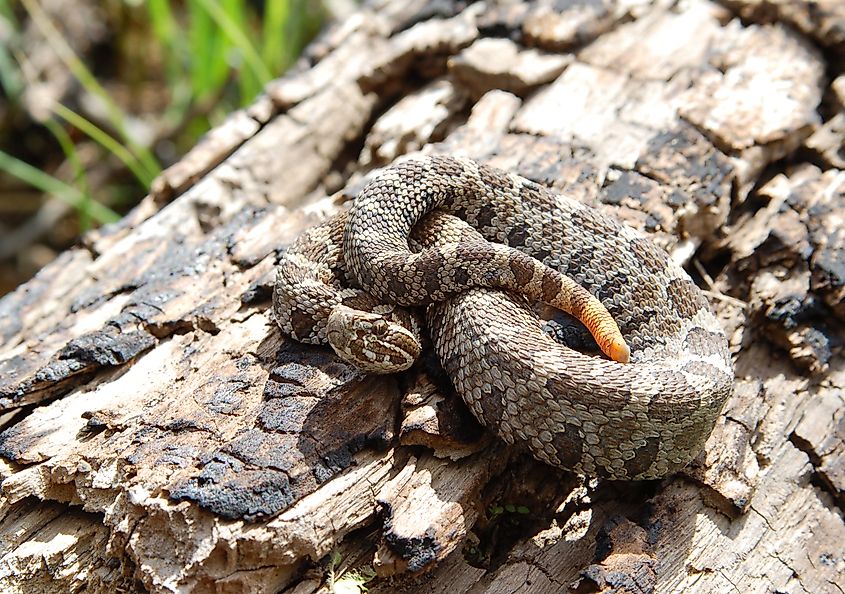
The Massasauga rattlesnake is another venomous snake species found in New York. These small snakes predominantly prefer wet habitats, including swamps, lakes, and swamps like the Cicero Swamp region. Adults typically grow to be 2 to 3 feet and sport a gray to light brown coloration with a darker shade on the back. They have short but thick bodies and can be distinguished by their heart-shaped heads. The Massasauga rattlesnake releases a cytotoxin that attacks the skin tissue to disrupt normal blood flow and undermine clotting.
Luckily, they are relatively shy and will only strike when defending themselves if you accidentally step on or intrude into their territory. In case of encounters, it is wise to give them a wide berth as they will rattle their tail to warn you before striking.
Snapping Turtle

Despite their docile and clumsy demeanor, these prehistoric-like reptiles have what it takes to be considered among the deadliest animals in New York. Snapping turtles are widespread across the state, choosing to stay in wetlands like rivers, ponds, and lakes, where they can easily access a diet of fish, frogs, little birds, and insects. They can weigh up to 35 pounds and grow to 18 inches in their adult stage and stand out for their long tails, webbed feet, and large heads. Snapping turtles pack a powerful bite, which is their most lethal aspect.
While bites are few and far between, there is a real danger of losing your finger if bitten. Furthermore, the bites can cause infection, leading to amputation in the worst-case scenario. Snapping turtles get aggressive when picked up, so it's best to avoid moving them. If you need to remove them from the road in an emergency, pick them up with two hands near the back of the shell, not their tail.
Moose

Standing over six feet tall and weighing beyond 1,000 pounds as adults, the gentle giants can cause serious damage when encounters go awry. Moose notably have flaps of skin hanging on their throats, known as dewlaps. The bulls have a dark brown color, lighter on the cows, with a conspicuous white patch just below the tail. Moose are dangerous because of their size and the massive antlers that grow on the males, spanning up to six feet in the summer and spring.
Bull moose (mature male moose) get very aggressive during the mating season and will attack without warning. On the other hand, cows are most aggressive when they have a calf and will charge at you when you get too close for comfort.
Wild Boar
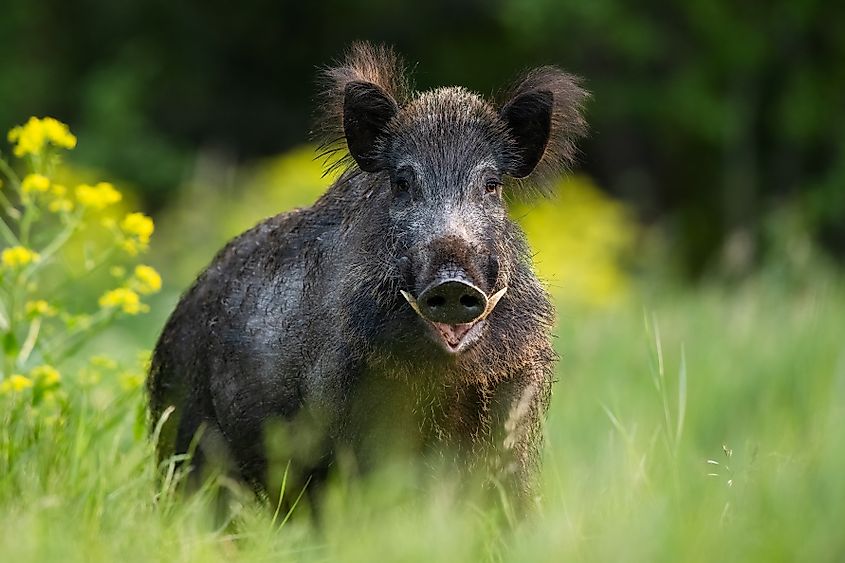
This invasive species was introduced to America from overseas and ended up exploding in population. Today, they are a menace to farmers spread across the state and are known for their aggressive nature. Wild boars have a black or reddish-brown color with coarse hair and large, intimidating heads. Adults weigh up to 600 pounds, and the large canines protruding from under their mouths make them a deadly animal to encounter in the wild. These animals are omnivores and consume much plant matter, constantly putting them on a collision course with farmers.
In addition to their dangerous bite and aggressive personality, their insatiable appetite has dire consequences for the ecosystem, destroying plant diversity and eroding soil.
American Black Bear
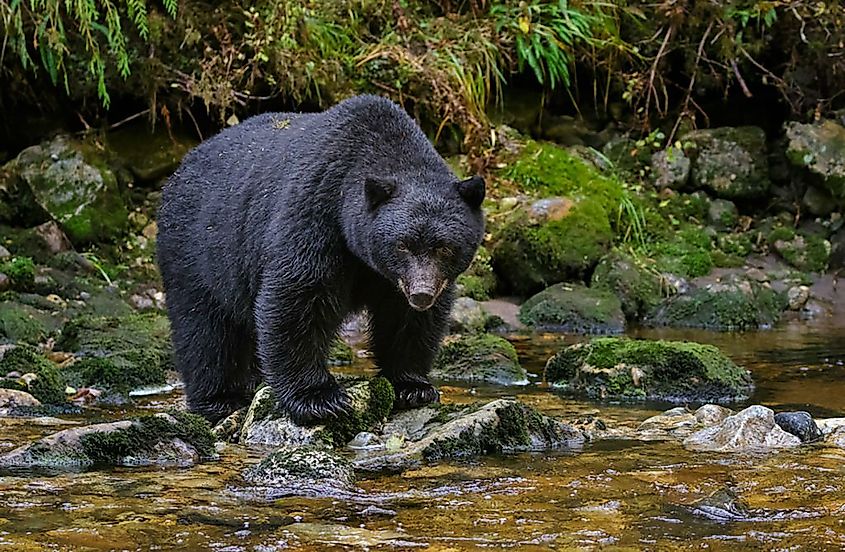
The black bear is the smaller of the American bears, growing up to 6 feet tall and 600 pounds in weight. They have small heads with rounded ears and flat backs. This species can be found across various habitats within the state but will most likely choose inaccessible terrain to avoid confrontations. Unlike grizzlies, black bears are generally timid around humans and will prefer to keep away. However, females with cubs can get defensive when they feel cornered and possibly charge at you.
Black bears can be a nuisance. They often stray into people's backyards, searching for food in trash cans and bird feeders or damaging beehives and cornfields. Their nonretractable claws and massive canines can be lethal when they decide to attack.
Coyotes
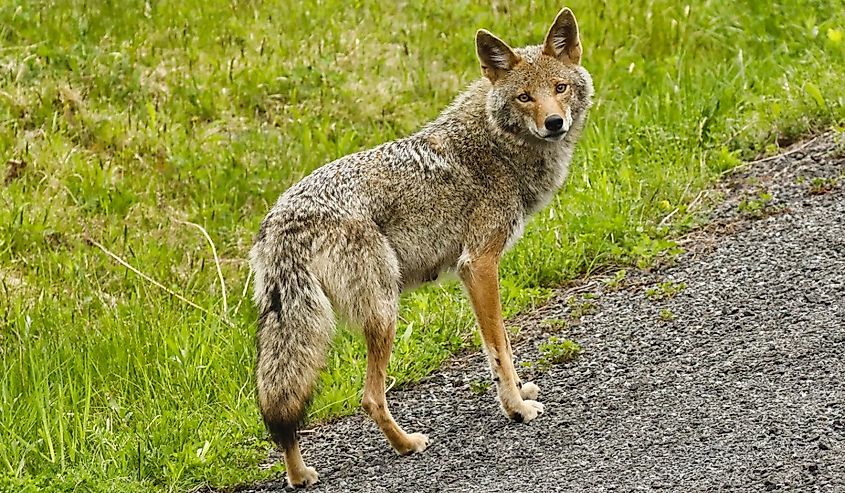
Known for their cunning ways, coyotes may not look dangerous, but they pose a threat to small children and pets. These animals weigh up to 40 pounds as adults and have a grayish to brown fur color with white underparts. They sport a narrow, extended muzzle with a black nose and triangular ears. Their large and bushy tails also differentiate them from other dog family members.
Coyotes have an extensive menu that allows them to thrive in different environments in New York. Although they don't pose imminent danger to humans, they can bite and leave you with infections. They also may target your pets, including dogs and cats, when left unattended.
Black Widow Spider
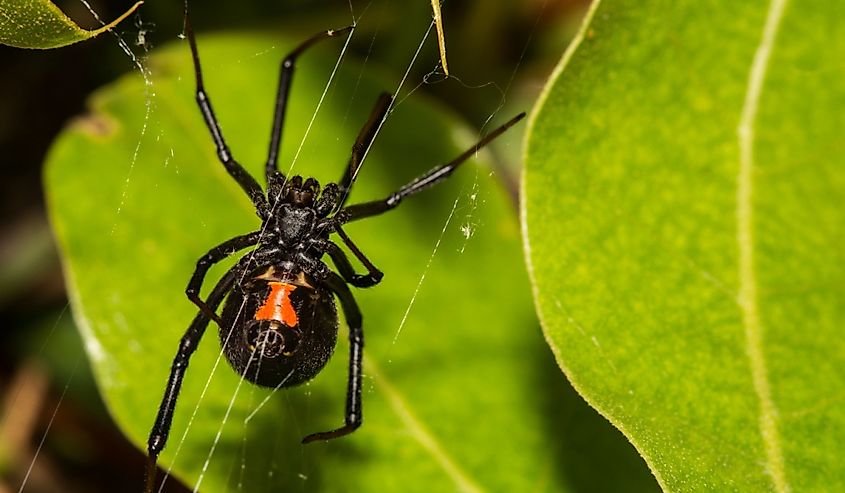
Black widows are not only the most lethal spiders in New York but one of the most venomous worldwide. These small crawlers have a shiny black body with a famous red hourglass-like mark on the underside that distinguishes them from other spiders. Females are twice as big as their male counterparts and can grow 19mm long. Black widow spiders are highly dangerous, with a venom almost 15 times as strong as a rattlesnake's. A bite could end up being lethal without immediate medical attention.
These spiders build their webs in homes, in dark corners of the basement, making interactions imminent. While they will not naturally attack humans, they bite when their webs are under attack or feel like they are in danger.
Timber Rattlesnake
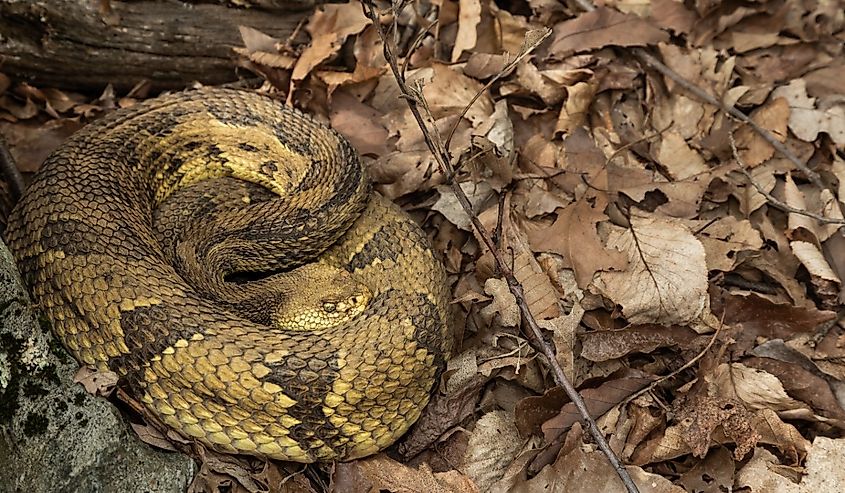
The timer rattlesnake's combination of considerable size, sharp fangs, and potent venom makes this reptile the deadliest snake species in New York. These snakes can grow up to 60 inches long and are gray to black. They are distinguishable from the black crossbands along the backs of their heavy bodies. Just like the copperheads, timber rattlesnakes ambush their prey and will lay in wait for them to come within striking distance. Their diet includes everything from rodents and amphibians to small birds and mammals.
Rattlesnakes have a generally mild disposition and aren't eager to bite humans. Nevertheless, they won't wait for an invitation to bite when you ignore the warnings from their rattles and come too close.
Brown Recluse Spider
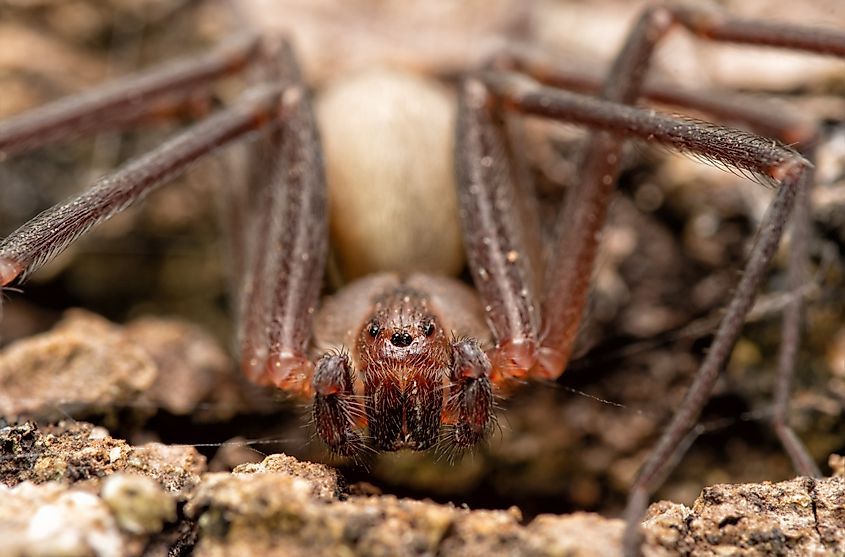
The brown recluse is another venomous spider species in New York. Unlike the black widow, they are conspicuously shaped like a violin and has a yellowish-to-brownish coloration. These spiders prefer dimly lit spaces to build their nests, usually the dark corners of closets and basements in our homes. Unfortunately, most homeowners don't realize they are lethal when encountering them, and confronting them leads to bites.
Bites are rare, but when they happen, they result in various symptoms, from nausea and fever to lesions. This results in a wound that can later contract secondary infections. The best thing to do is to get a professional exterminator to rid you of an infestation if you notice one.
Mosquito
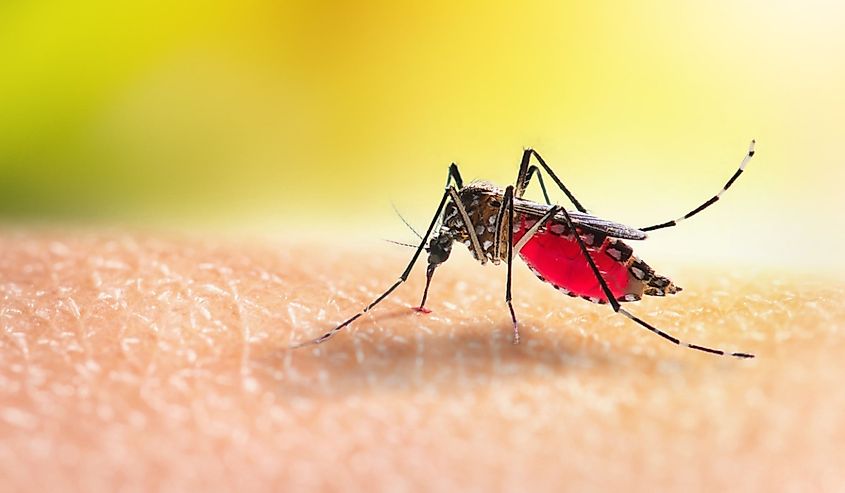
Don't be fooled by their minute size; mosquitoes are possibly New York's most lethal animal. They are a nuisance worldwide, known for their itchy bites. Mosquitoes carry diseases like Zika, malaria, dengue fever, and West Nile Virus and pass them to mammals when they bite you. These bites are not limited to humans; these insects also bite livestock and pets, transmitting infections like Equine Encephalitis.
Outdoor adventures like hiking and camping in the wild predispose you to mosquito bites. However, you can reduce the chances of bites by sleeping under a treated net and wearing mosquito repellants when hiking through the bushes.
Wasps
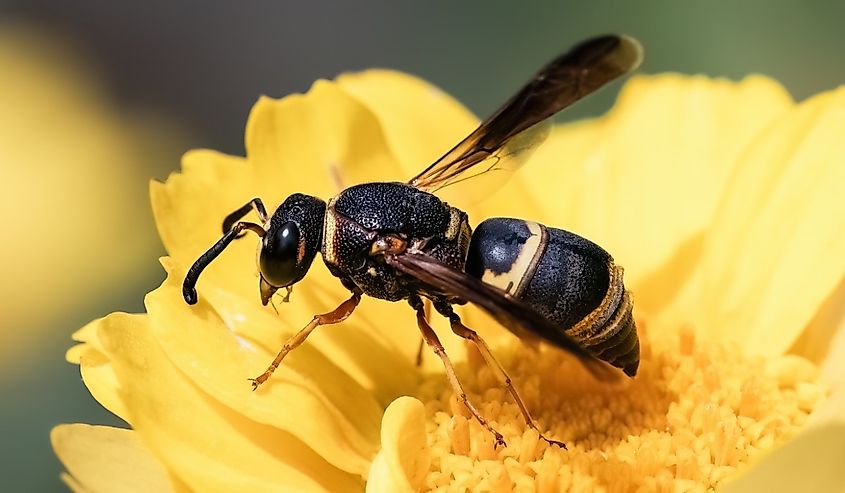
In New York, the most common wasps are European wasps and Eastern yellowjackets, which are sometimes confused for bees or hornets. Their reputation for being aggressive with a painful sting and constant conflict with humans makes them a dangerous animal to interact with. Unlike bees, wasps are larger, with notable spikes on the legs. They also have an elongated body with tiny waists, often colored bright yellow. Most encounters between wasps and humans happen during outdoor recreational activities like picnicking.
They have a painful sting, and their vast numbers mean you may suffer more than one sting. While they can be aggressive and dangerous, wasps play a vital role in the ecosystem as pollinators.
North American Porcupine
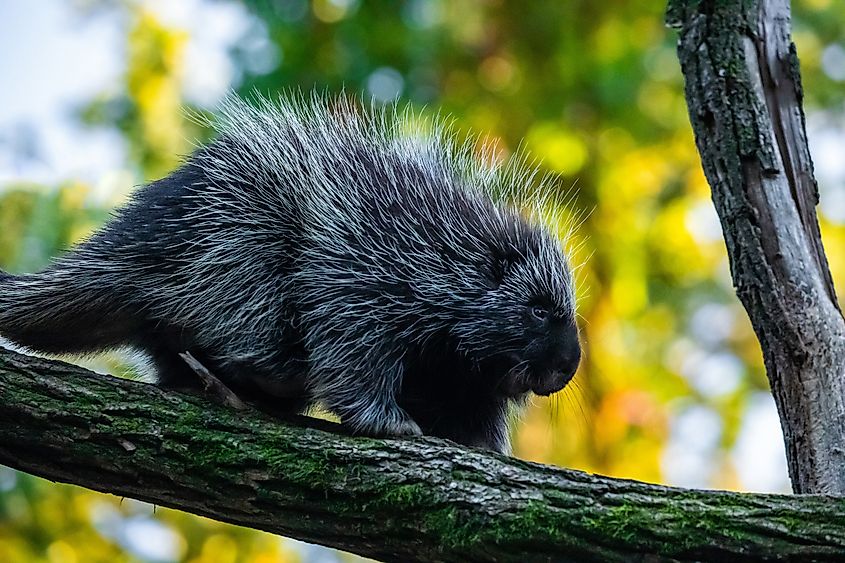
The North American porcupine is one of the largest rodents found in New York. These relatively docile animals weigh up to 20 pounds as adults and grow to 3 feet long. They are typically colored black to brownish-yellow and stand out for the thousands of hollow quills on their backs. Porcupines don't pose a danger to humans unless they feel attacked, causing them to employ their defensive mechanism.
When drawn out, the sharp quills on porcupines' backs can easily puncture human flesh, causing serious wounds. This is not only painful but can also cause infections, so the best thing to do in the event of encounters is to leave them be.
By learning about the few predatory or venomous animals that inhabit significant stretches of wild lands throughout New York, visitors and residents can take proper precautions to enjoy the outdoors safely. Awareness of potential dangers comes with reduced risk, allowing for appreciation of the natural splendor all wildlife helps maintain. Ultimately, understanding local ecology fosters a greater respect for a delicate balance. It also ensures harmful encounters remain rare and respect between humans and the wild denizens they share space with.











